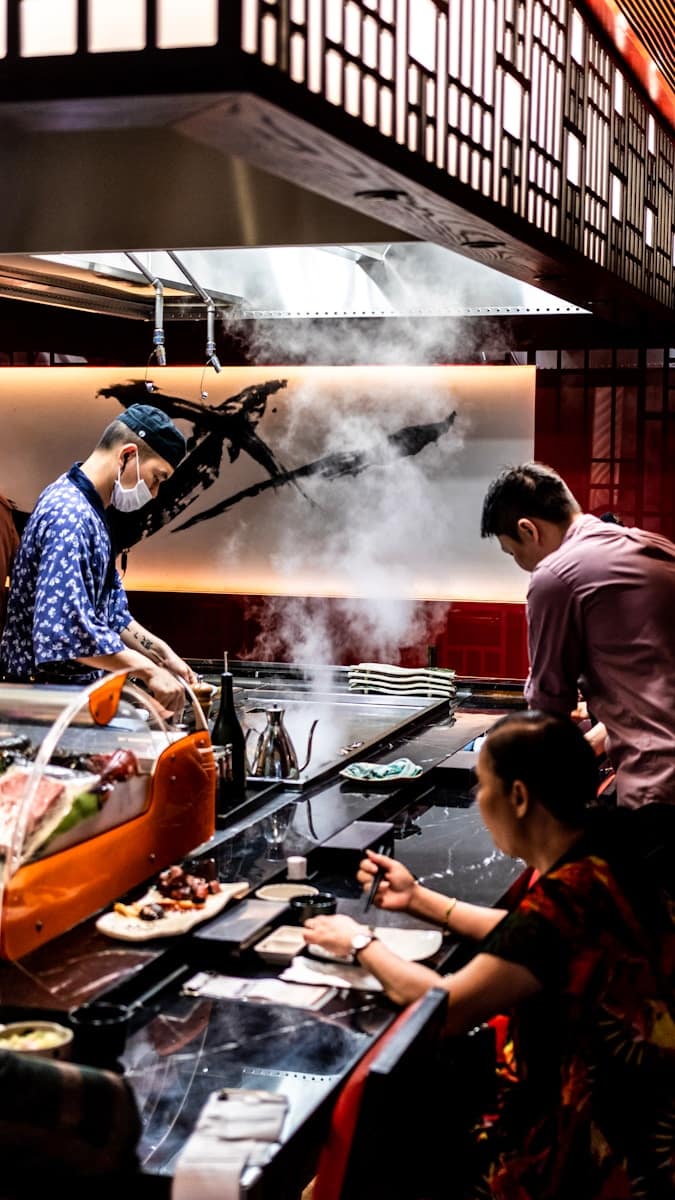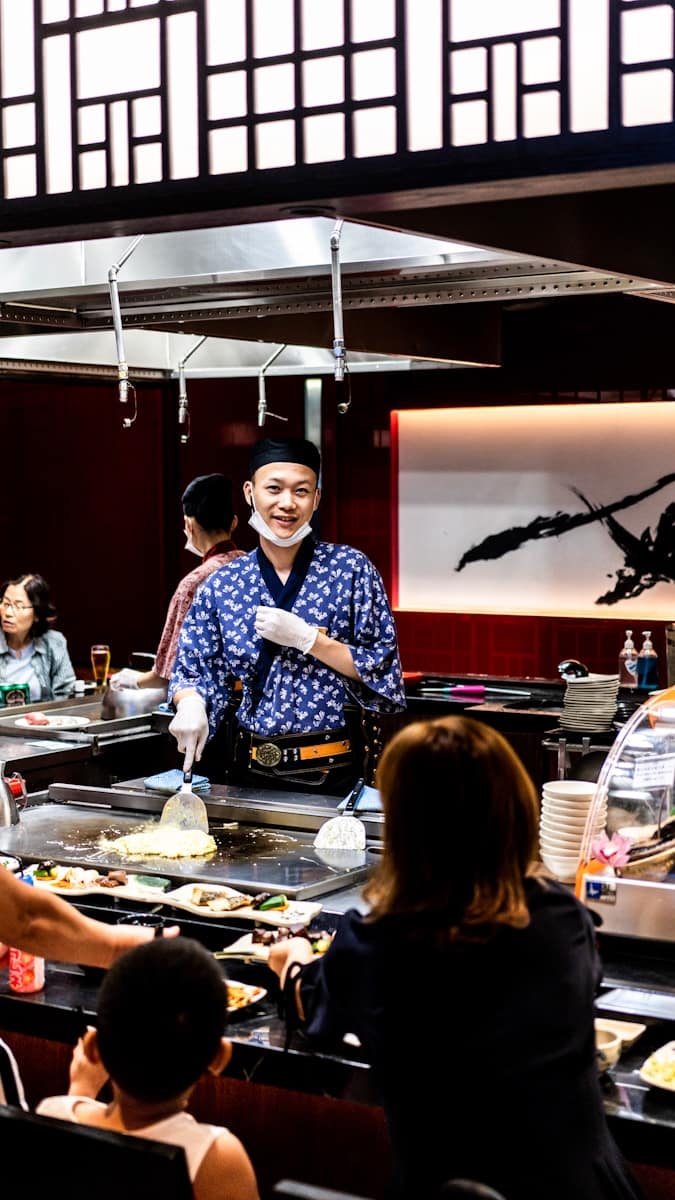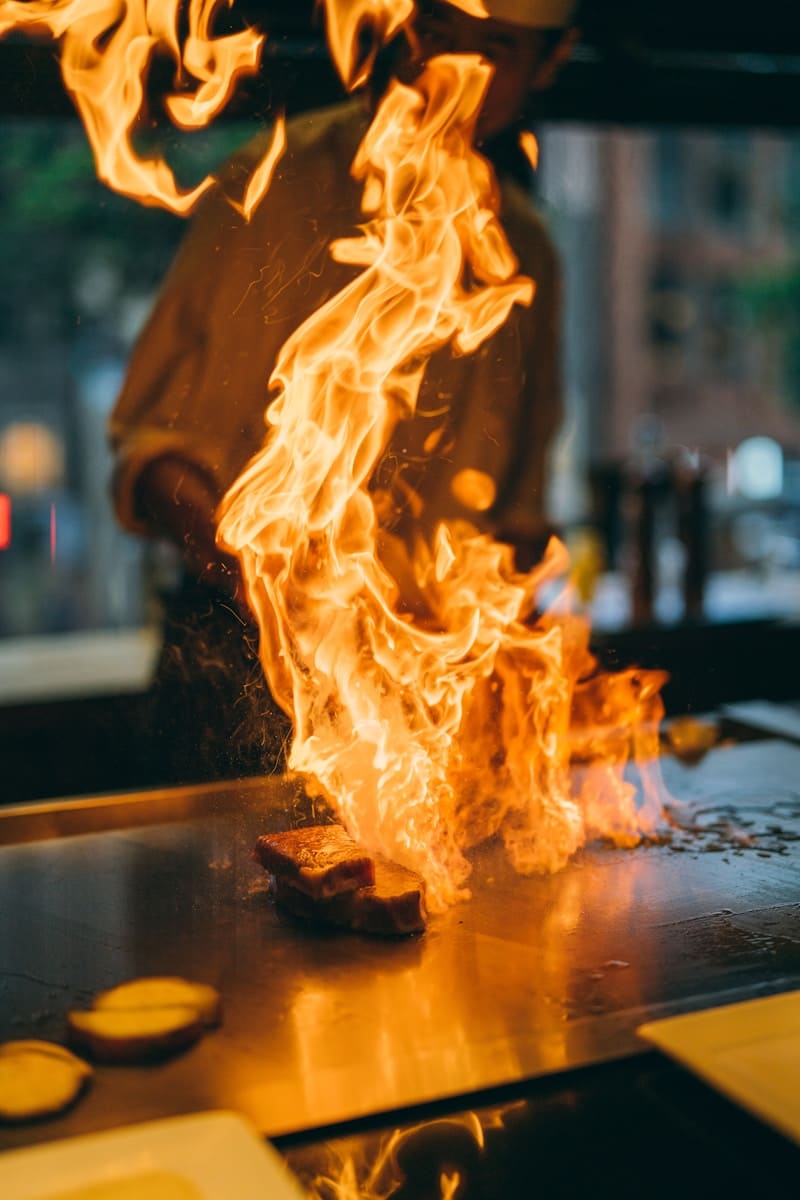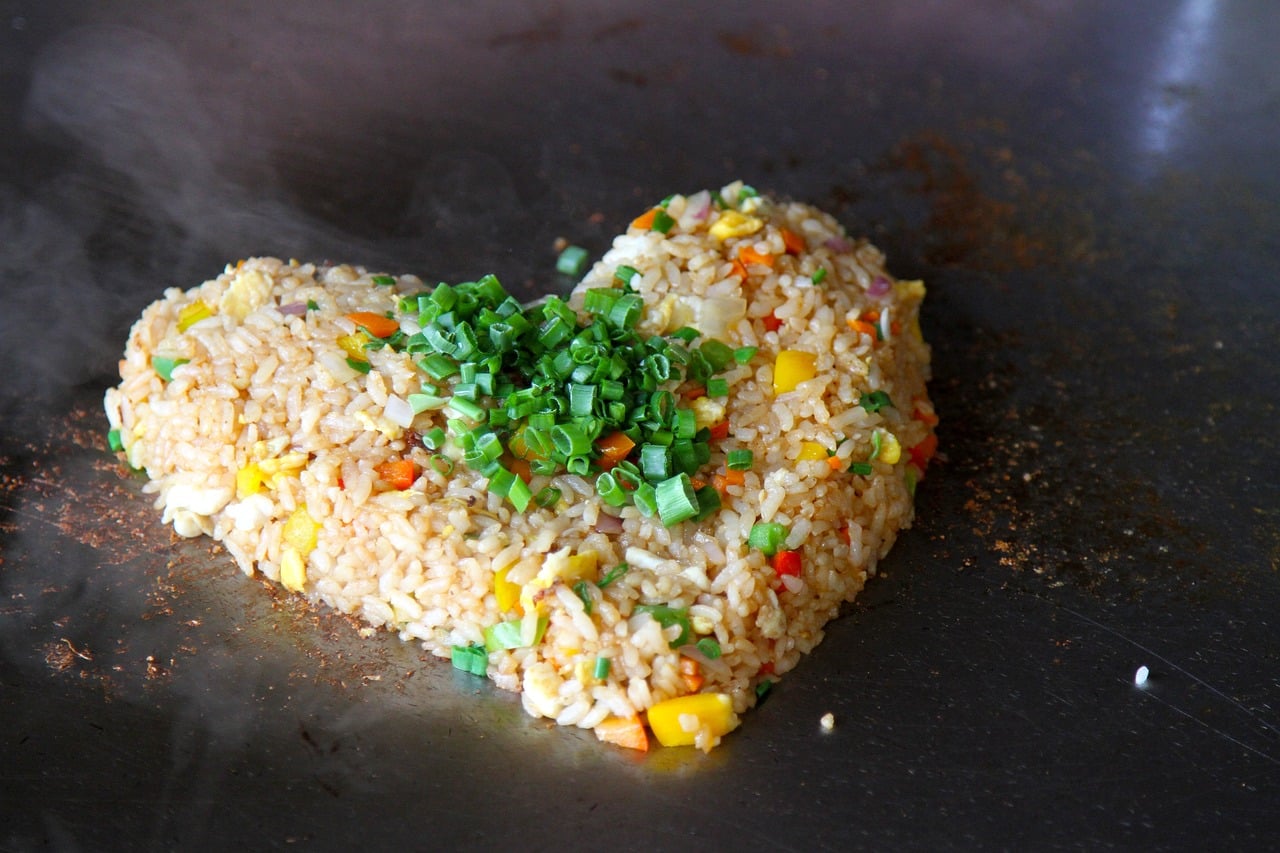
Photo by hiurich granja on Unsplash
As someone who loves exploring different cuisines, I often find myself drawn to teppanyaki. You know, that style of cooking where the chef prepares your meal right in front of you on a hot, flat grill, often with a bit of showmanship. It’s fun, interactive, and the food is always delicious. But if you’ve ever wondered, is teppanyaki Japanese?—you’re not alone. I used to have the same question! Let’s dive into the origin of teppanyaki, how it became popular, and why it’s such a special part of dining culture.
What Is Teppanyaki?
Before we get into its origins, let’s quickly cover what teppanyaki is. The word “teppanyaki” is a combination of two Japanese words: “teppan,” which means iron plate, and “yaki,” which means grilled or pan-fried. Essentially, teppanyaki refers to dishes cooked on a large, flat iron griddle. While it might sound simple, the beauty of teppanyaki is in the way it’s prepared right before your eyes, often with some impressive knife skills and a touch of theatrical flair.
The ingredients in a teppanyaki meal are usually meats like beef, chicken, shrimp, or fish, along with vegetables such as mushrooms, onions, and zucchini. The chef typically grills everything, sometimes flambéing for effect, and serves it fresh off the griddle. It’s definitely more than just a meal—it’s an experience!
Is Teppanyaki Really Japanese?
So, back to the question: Is teppanyaki Japanese? Yes, teppanyaki cooking does have its origins in Japan, but it might surprise you to learn that the style we’re most familiar with today has a bit of an international twist.
Teppanyaki first appeared in Japan in the 1940s. It was introduced by a restaurant chain called Misono, which initially created the concept as a way to cook Western-style dishes on a flat iron grill. However, it didn’t take long for the idea to evolve, with Misono soon adapting the teppanyaki style to incorporate more traditional Japanese ingredients like seafood and vegetables. While the Japanese enjoyed the food, it was actually the entertaining, showy cooking style that made teppanyaki a hit with Western tourists in Japan.
Teppanyaki’s international fame grew when it spread to the United States, where restaurants like Benihana helped popularize the dining experience. The addition of tricks—like flipping shrimp tails into hats or catching an egg midair with a spatula—became part of the spectacle, and this version of teppanyaki became what most of us now associate with the word.
Traditional Japanese vs. Modern Teppanyaki
While teppanyaki is undoubtedly Japanese in origin, the version many of us enjoy today—especially in the U.S.—is more of a fusion of Japanese flavors and Western showmanship. Traditional Japanese teppanyaki tends to focus more on the quality of the ingredients and the simplicity of the cooking process, without the theatrics.
In Japan, you might experience a more refined teppanyaki meal, especially if you’re at a high-end restaurant where the emphasis is placed on perfectly seared wagyu beef, fresh seafood, or seasonal vegetables. The chef’s precision and skill are still impressive but are more subtle compared to the playful, performance-based teppanyaki often seen in Western countries.

Photo by hiurich granja on Unsplash
Why I Love Teppanyaki
I’ll admit, part of the appeal of teppanyaki for me is the interactive aspect. I love watching the chef expertly chop vegetables or toss shrimp into the air while I’m sitting just a few feet away. It’s an experience that combines great food with a little bit of entertainment, and it never gets old. There’s something satisfying about watching your meal being prepared with such attention to detail, and knowing that it’s fresh off the grill.
And of course, the food itself is fantastic. Whether it’s tender steak, perfectly seared scallops, or savory grilled vegetables, teppanyaki offers something for everyone. I also love how customizable it is—if you have dietary preferences or restrictions, the chef can often tailor the dish right in front of you.
Conclusion: Yes, Teppanyaki Is Japanese (with a Twist!)
So, is teppanyaki Japanese? The answer is a resounding yes, but with a bit of a twist. While its roots are firmly planted in Japanese cooking, teppanyaki as we know it today has evolved into a global dining phenomenon, especially with its more flamboyant version that’s popular in the West. Whether you’re sitting at a teppanyaki grill in Tokyo, enjoying a more traditional experience, or dining at a fun, high-energy restaurant in the U.S., teppanyaki offers a unique combination of fresh flavors, sizzling hot grills, and pure entertainment.
Next time you’re in the mood for some interactive dining or want to impress your friends with fun facts about teppanyaki’s origins, you’ll know that this delicious form of cooking is a proud part of Japanese cuisine—just with a dash of international flair!

